Mattie Wakefield (1878-1964) dedicated herself to a thirty-seven-year career with the Hawaii Department of Public Instruction. She served as a teacher for Mountain View School (1908-1917), and as principal for Kapiolani School (1917-1928) and Waiakea Kai School (1927-1938). After retiring from her job as principal, she continued to teach for another four years.
Wakefield lived in a large frame house, surrounded by palms and plants on ‘Iliahi Street, in the Puʻueʻo neighborhood of Hilo. In the 1940s Daisy Kim, a sixteen-year-old, lived and worked as a maid in the home. Wakefield also owned a house in Glenwood.
Note: Hawaiian diacritical marks comprise just two symbols: the ‘okina (glottal stop) and the kahakō (macron). We use them with Hawaiian place names, but do not add them to proper names if a family or a company does not use them.
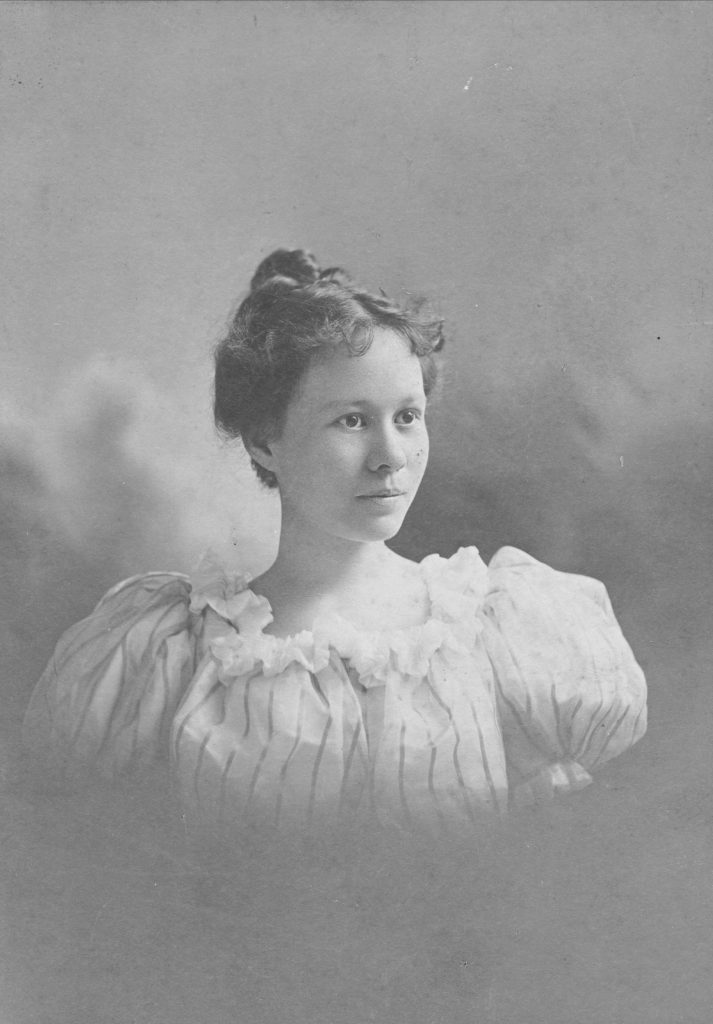
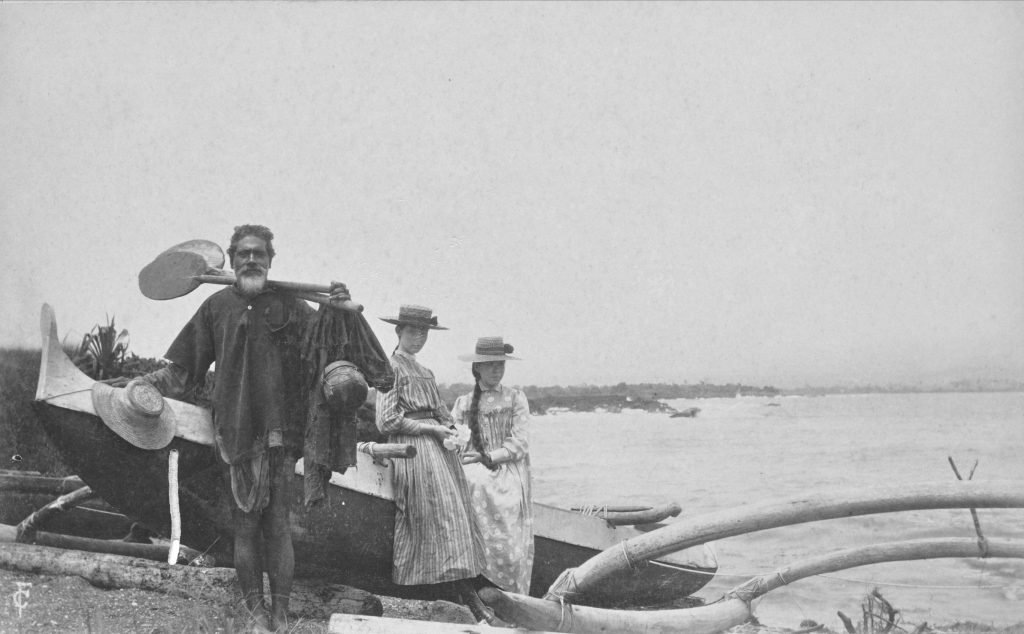
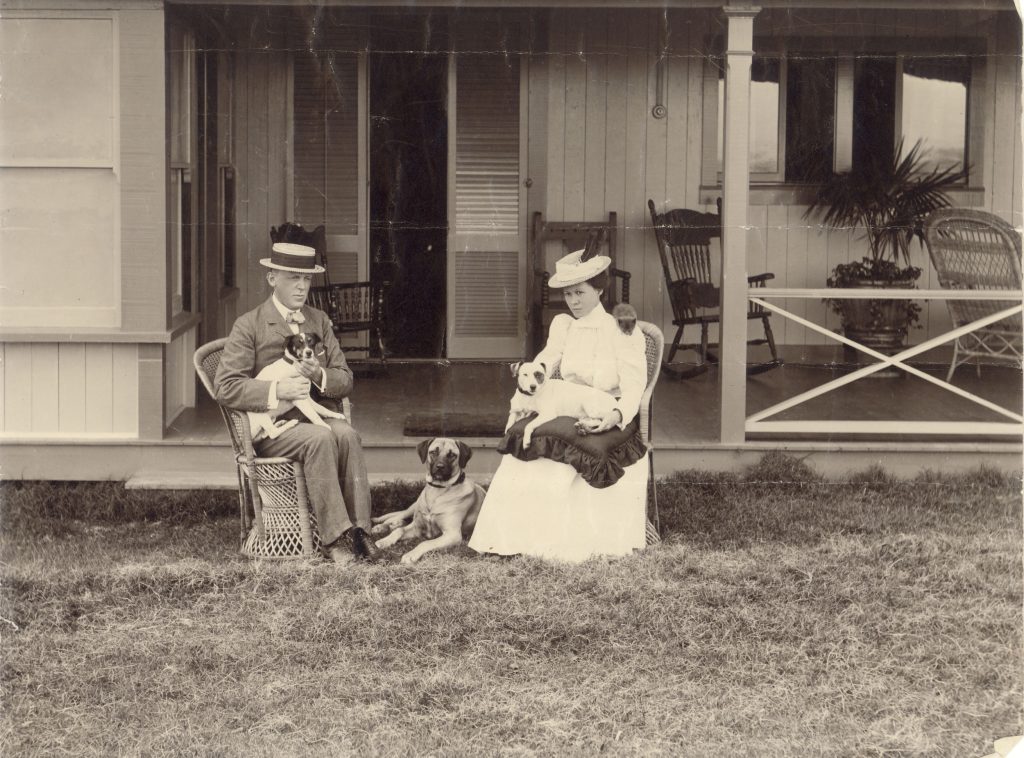
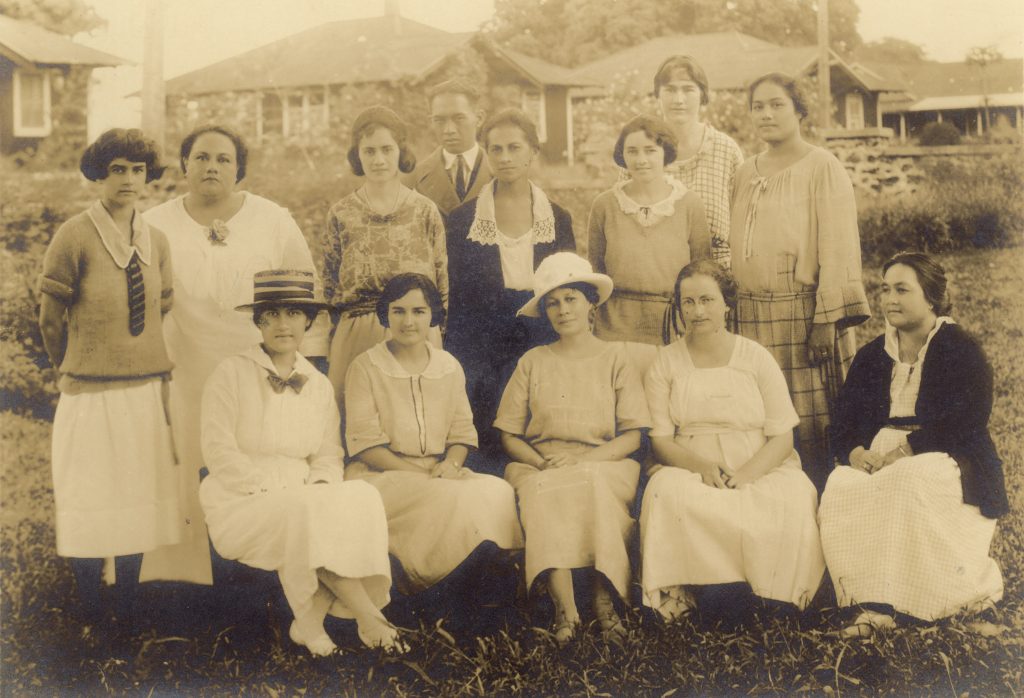
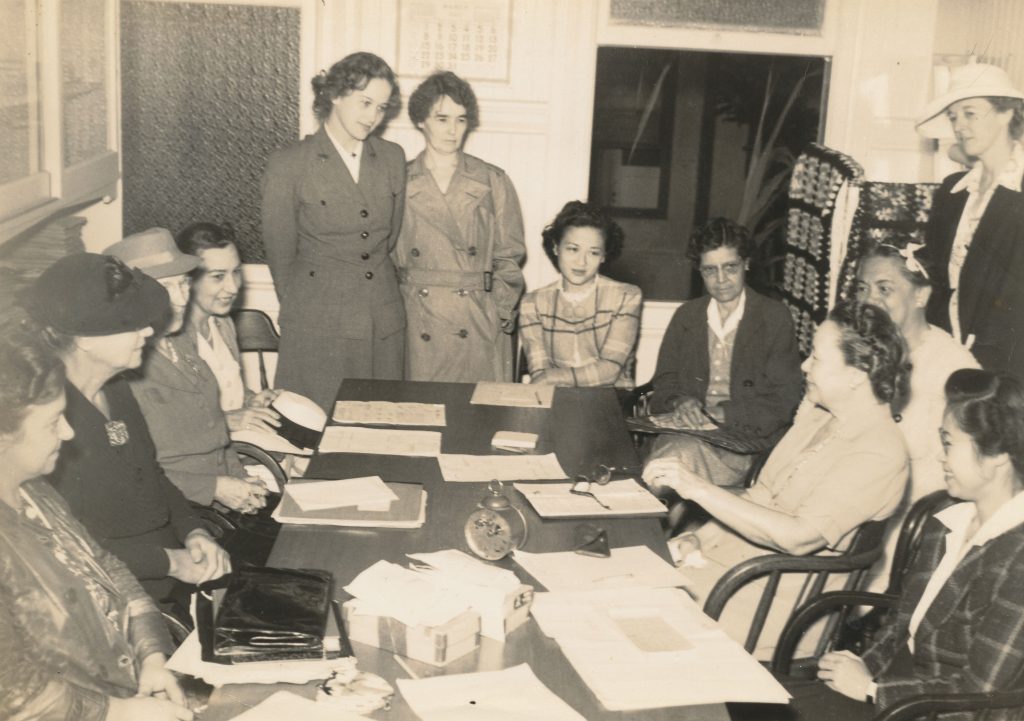
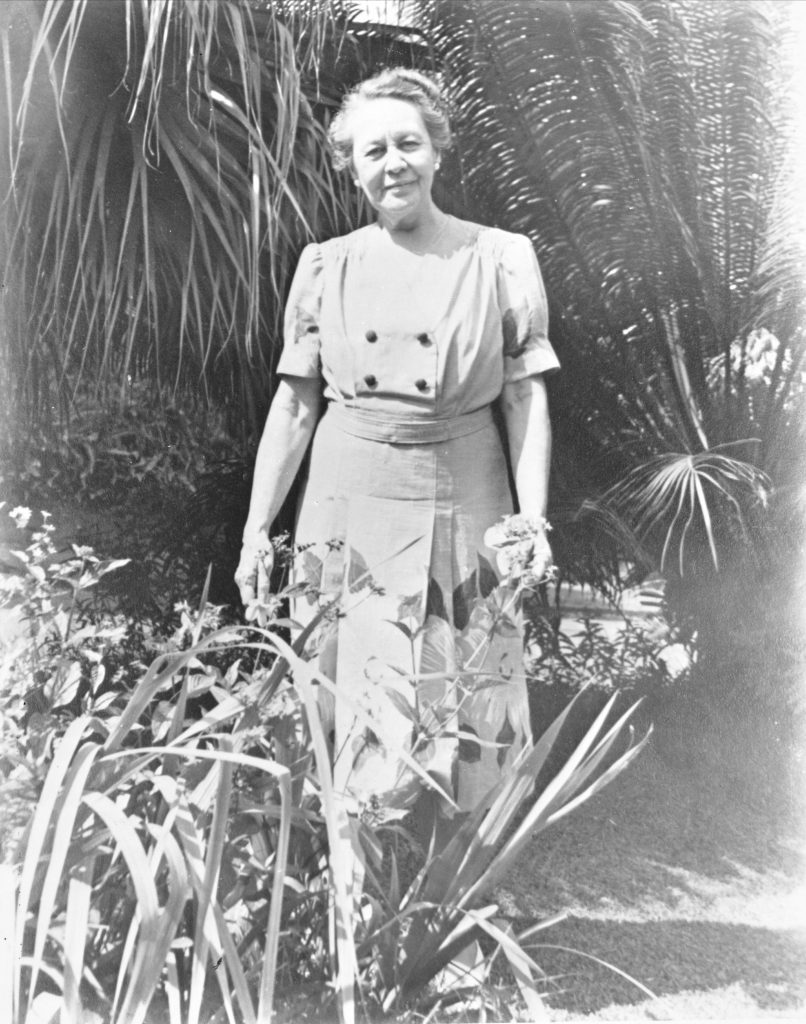
Mattie Wakefield in her garden. She lived 86 years and died on October 15, 1964. The Hawaii Tribune-Herald referred to her as a “long-time Hilo educator” and an “outstanding community leader.”
